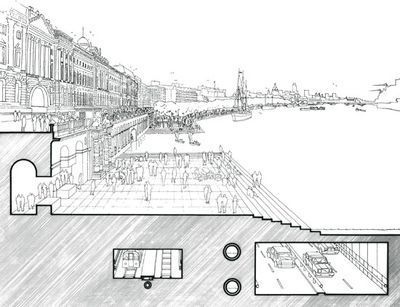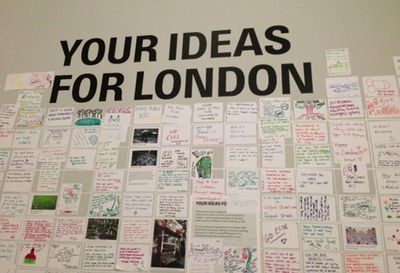Soapbox sitopia
By MIKA ROSS-SOUTHALL
Running
alongside the Royal Academy of Art’s new exhibition on Richard Rogers, artists,
designers, architects and writers are arming themselves this summer with a microphone
and a wooden soapbox to speak about the issues confronting contemporary
architecture and cities (if you follow the RA’s twitter account you’ll have
noticed the numerous, contentious conversation-starters they’ve been feeding us
lately “live” from these talks).
Audience
participation, they told us at the start of the fifteen-minute discussion on
Friday, is key; but there were only a handful of polite contributors, no fiery
hecklers – a shame. Perhaps the “free, no booking required” talk (only to those who had bought a ticket to the Richard Rogers exhibition) held at the Burlington
Garden gallery would have engaged more public scrutiny had it been in the RA’s
courtyard, and really open to all . . . .
What
would it be like to describe a city through food? This was the question posed by the architect and writer Carolyn Steel at the end of last week, based on her
book Hungry City: How food shapes our lives (2008), which won the Royal Society of Literature
Jerwood Award for Non-Fiction. Her last chapter coined the word “sitopia”, from
the Greek “sitos” (food), to mean an evolving utopia with
food at its centre. After all, she argued, food is a way of thinking, seeing
and changing cities, “a tool to understand the city as an organism . . . and for
dwelling in a holistic way. We need to ask ourselves how we live”.
 "London As It Could Be", 1986, Richard Rogers Partnership.
"London As It Could Be", 1986, Richard Rogers Partnership.
The ecological loop of a city can be
mapped through food (its production, use, waste etc.). A huge influence on
Steel’s thinking is George Dodd’s book (and no doubt his extensive subtitle) The Food of London: A sketch of the chief
varieties, sources of supply, probable quantities, modes of arrival, processes
of manufacture, suspected adulteration, and machinery of distribution, of the
food for a community of two millions and a half (1856). While lecturing in
Cambridge during the 1990s, Steel discovered that her students intuitively
understood the importance of sustainability in architecture when she related it
to food. “If there is food in the middle of a table of people, we all know how
to behave, how to share, how to respect each other’s needs around us.”
Can this food-thinking be applied to how
we create and inhabit space? She has a point. Architecture should address the
humanness of a space, and not only for environmental reasons (good architecture
does both). Buildings, cities, public spaces – these are all intense places for
human interaction.
Around the gallery, quotations from Richard
Rogers stamp the wall in bold, black lettering on bright (those iconic Rogers
colours) poster-like backgrounds: “good design humanizes. Bad design
brutalizes”; “the concepts of citizenship, civil society and civil responsibility
were all born in the city”; “architecture plays a vital part in humanizing
cities, structuring the scale of spaces and buildings, and shaping an
environment that encourages justice, fairness and delight” – snippets
from his BBC Leith Lecture in 1995 (published in the book Cities For a Small Planet).
Another block of colour states “The
Ephebic Oath” – “I shall leave this city not less but more beautiful than I
found it” – apparently it was sworn more than 2,400 years ago by the young
people of Athens (a world city at the time) as they were formally inducted as
citizens.
Elsewhere on the walls are “Your Ideas For
London” (above) – a selection of A6-sized notes written by the public, some serious,
some not. My favourites include “use empty buildings” (a thoughtful, ecological
idea for housing a growing population and the importance of a building’s legacy);
and “make a massive spoon swimming pool that sits on top of the Thames . . .
and make it heated”.
In light of Thomas Heatherwick’s plans for a tree-lined pedestrian
bridge across the Thames, a spoon swimming pool doesn’t seem too far-fetched.
And I’m sure Carolyn Steel would be pleased with a cutlery-shaped urban structure.
Peter Stothard's Blog
- Peter Stothard's profile
- 30 followers





